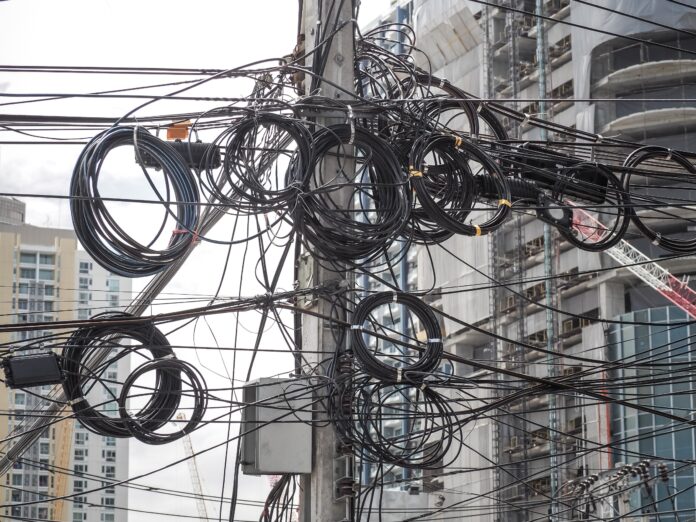Lead from at least 2,000 old cables has degraded over time, contaminating the water and soil in several U.S. communities, reported The Wall Street Journal
In a shocking report, The Wall Street Journal found that thousands of toxic lead-covered cables have been left behind by a host of communications service providers, including the predecessor companies of AT&T and Verizon, posing a series health risk for people and the environment in the surrounding areas.
Specifically, the WSJ’s extensive investigation found that lead from at least 2,000 old cables — both underground and overhead lines — has degraded over time, contaminating the water and soil in communities across the U.S. The paper arrived at this conclusion by testing lead levels in sediment and soil in several locations. More than four dozen of these exceeded the U.S. Environmental Protection Agency’s safety recommendations.
According to the Mayo Clinic, lead exposure can cause a host of serious damage to the brain and other organs, especially in children. Signs and symptoms of lead poisoning include, but are not limited to, developmental delays and learning difficulties, abdominal pain, weight loss, seizures, vomiting and pica (eating things that are not food). In extreme cases, lead exposure can lead to death.
The companies, as well as environmental regulators, have reportedly known about the existence of the leftover lead-wrapped cables for years and the dangers associated with them, but as the WSJ states, “haven’t meaningfully acted… or made efforts to monitor the cables.”
When asked for comment by the WSJ, both AT&T and Verizon claimed to be taking the concerns seriously, while respectively questioning the report and maintaining that in some cases, the cables still provide vital services.
“The health, safety and well-being of our people, our customers, and our communities is of paramount importance,” said AT&T, but added that the report “conflicts not only with what independent experts and longstanding science have stated about the safety of lead-clad telecom cables but also our own testing.”
Verizon said it is testing sites where the WSJ found contamination but was sure to point out that the many lead-sheathed cables still in commission on its network provide “critical voice and data services, including access to 911 and other alarms, to customers nationwide.”
A spokesperson for the trade group USTelecom said, “The U.S. telecommunications industry stands ready to engage constructively on this issue.”

